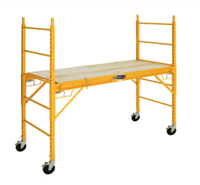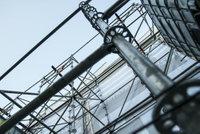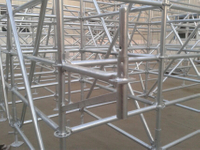Content Menu
● Understanding Ringlock Scaffolding Planks
● Types of Ringlock Scaffolding Planks
● Key Factors in Choosing the Right Ringlock Scaffolding Plank
>> 1. Material and Durability
>> 2. Load-Bearing Capacity
>> 3. Size and Compatibility
>> 4. Safety Features
>> 5. Compliance with Safety Standards
>> 6. Supplier Reputation
● Best Practices for Safety and Efficiency
● Cost vs. Long-Term Value
● Common Applications of Ringlock Scaffolding Planks
● Maintenance and Care of Ringlock Scaffolding Planks
● Advanced Safety Tips for Using Ringlock Scaffolding Planks
● Environmental Considerations
● Case Studies: Successful Use of Ringlock Scaffolding Planks
>> Case Study 1: High-Rise Construction in Urban Area
>> Case Study 2: Bridge Repair Project
>> Case Study 3: Temporary Event Staging
● Conclusion
● FAQ
>> 1. What is the most durable material for ringlock scaffolding planks?
>> 2. How do I know if a plank fits my ringlock scaffolding system?
>> 3. What safety certifications should I look for?
>> 4. Can I use wooden planks with ringlock scaffolding?
>> 5. How often should I inspect ringlock scaffolding planks?
Selecting the right ringlock scaffolding plank is crucial for ensuring both safety and efficiency on any construction site. As the primary working surface, the plank's quality, compatibility, and durability directly impact worker well-being and project productivity. This comprehensive guide will walk you through every key aspect of choosing the best ringlock scaffolding plank, complete with practical tips and expert answers to frequently asked questions.
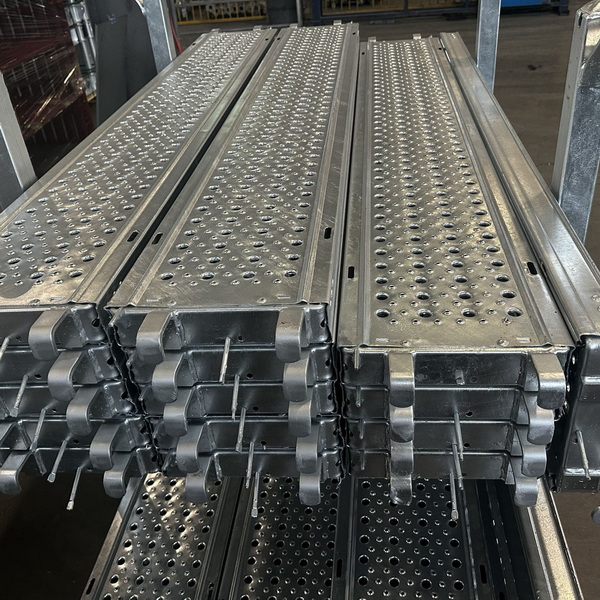
Understanding Ringlock Scaffolding Planks
Ringlock scaffolding is a modular system widely used in construction, infrastructure, and industrial projects due to its flexibility, strength, and quick assembly. The planks, which serve as walkways and work platforms, are a vital component of this system. Choosing the right plank type and specification is essential for safe and efficient operations.
Types of Ringlock Scaffolding Planks
There are three main types of ringlock scaffolding planks, each with distinct features and advantages:
| Plank Type | Material | Key Benefits | Typical Use Cases |
| Steel | Galvanized steel | High strength, fire-resistant, long lifespan, weatherproof | Heavy-duty construction, high-load areas |
| Aluminum | Aluminum | Lightweight, corrosion-resistant, easy to handle | Projects needing frequent movement |
| Wood | Pine/Fir | Cost-effective, easy to cut and adjust | Temporary or light-duty use |
Key Factors in Choosing the Right Ringlock Scaffolding Plank
1. Material and Durability
- Steel planks: Best for heavy loads and long-term projects due to superior strength and durability.
- Aluminum planks: Ideal for projects requiring frequent relocation or where weight is a concern.
- Surface treatment: Galvanized or powder-coated finishes help resist corrosion and extend lifespan.
2. Load-Bearing Capacity
- Always check the maximum load rating (e.g., EN 12811-1 standard).
- Never exceed the specified weight limit to prevent accidents.
3. Size and Compatibility
- Match plank length and width (typically 1m–3m) to your ringlock system.
- Ensure planks fit securely atop ledgers and standards, with locking mechanisms or hooks to prevent movement.
4. Safety Features
- Look for anti-slip surfaces, reinforced edges, and secure locking devices.
- Planks should be compatible with guardrails and toe boards for added fall protection.
5. Compliance with Safety Standards
- Ensure planks meet OSHA, EN, or AS/NZS standards for legal compliance and safety assurance.
- Ask suppliers for certification documents or product test reports.
6. Supplier Reputation
- Choose experienced and reputable suppliers to guarantee quality and after-sales support.
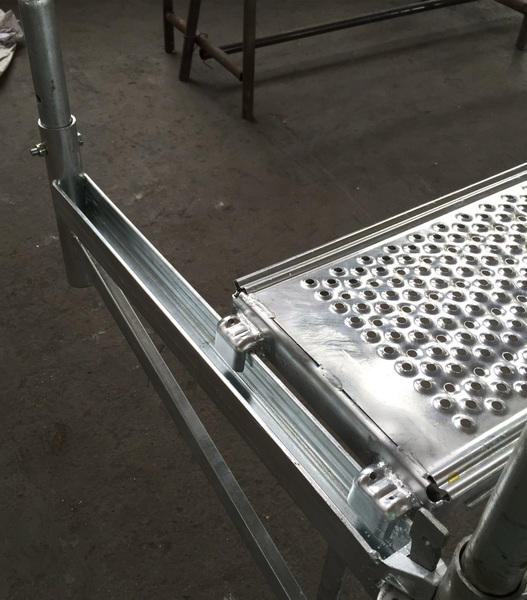
Best Practices for Safety and Efficiency
- Regular Inspections: Check for cracks, bends, rust, or other damage before each use.
- Do Not Mix Systems: Use planks designed specifically for ringlock scaffolding to ensure proper fit and safety.
- Team Training: Ensure all workers understand weight limits and assembly techniques.
- Use Guardrails and Toe Boards: Always install these for fall protection.
Cost vs. Long-Term Value
While wooden planks may be less expensive upfront, steel and aluminum planks offer greater longevity and require less maintenance. Investing in high-quality ringlock scaffolding planks reduces long-term costs by minimizing replacements and improving safety.
Common Applications of Ringlock Scaffolding Planks
- High-rise building construction
- Bridge maintenance and repairs
- Industrial plant overhauls
- Event staging and temporary platforms
Maintenance and Care of Ringlock Scaffolding Planks
Proper maintenance of ringlock scaffolding planks is essential to prolong their lifespan and ensure ongoing safety. Regular cleaning to remove dirt, debris, and corrosive substances helps prevent damage. Avoiding exposure to harsh chemicals and storing planks in dry, covered areas can significantly reduce wear and tear.
Inspection Checklist:
- Check for cracks, splits, or warping in wooden planks.
- Look for rust, corrosion, or dents in metal planks.
- Verify that locking mechanisms and hooks are intact and functional.
- Ensure anti-slip surfaces remain effective and undamaged.
Advanced Safety Tips for Using Ringlock Scaffolding Planks
Beyond basic safety measures, consider these advanced tips to enhance worker protection and operational efficiency:
- Use load distribution mats under scaffolding legs to prevent sinking or shifting on soft ground.
- Implement a scaffold tag system to indicate inspection status and load limits.
- Train workers on emergency procedures related to scaffold failure or accidents.
- Use personal fall arrest systems in conjunction with guardrails for added security.
Environmental Considerations
Choosing environmentally friendly materials and practices can reduce the ecological footprint of scaffolding projects. Aluminum planks, for example, are recyclable and lightweight, reducing transportation emissions. Wood sourced from sustainable forests and treated with eco-friendly preservatives is another option.
Recycling and proper disposal of damaged planks prevent environmental contamination. Suppliers offering take-back programs or refurbishment services contribute to sustainable construction practices.
Case Studies: Successful Use of Ringlock Scaffolding Planks
Case Study 1: High-Rise Construction in Urban Area
A major construction company used galvanized steel ringlock scaffolding planks for a 50-story building. The planks' durability and load capacity allowed for safe, efficient work at height, reducing downtime and accidents.
Case Study 2: Bridge Repair Project
Aluminum planks were chosen for a bridge repair due to their lightweight nature, facilitating quick relocation and minimizing worker fatigue. The project was completed ahead of schedule with no safety incidents.
Case Study 3: Temporary Event Staging
Wooden planks were used for a temporary stage setup at a large outdoor event. Proper treatment and regular inspections ensured safety throughout the event duration.
Conclusion
Choosing the right ringlock scaffolding plank is not just about cost-it's about ensuring the safety, stability, and efficiency of your entire project. By carefully evaluating material, load capacity, size, safety features, and supplier reputation, you'll create a secure platform that supports both your team and your project's success. Always prioritize quality and compliance to minimize risks and maximize productivity on-site.
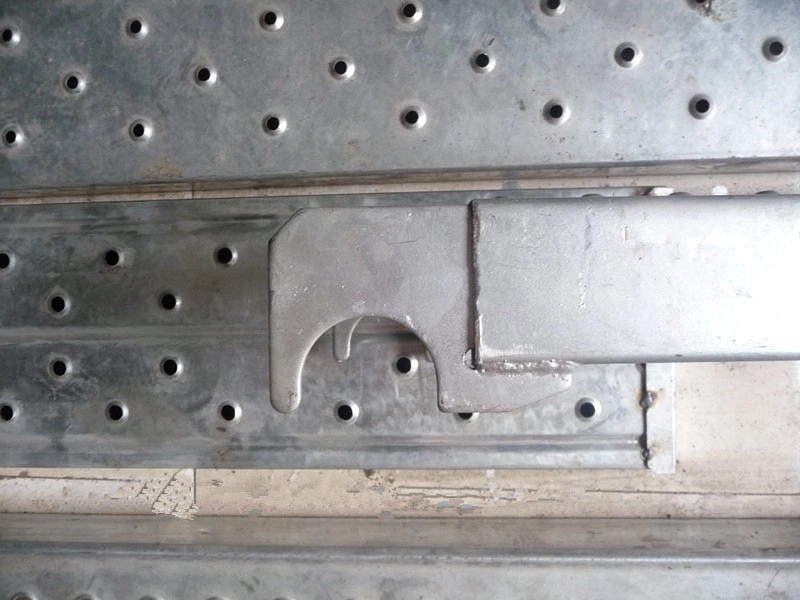
FAQ
1. What is the most durable material for ringlock scaffolding planks?
Steel is the most durable, offering high strength, fire resistance, and a long lifespan, making it ideal for heavy-duty and long-term projects.
2. How do I know if a plank fits my ringlock scaffolding system?
Check the plank's length and width specifications and ensure it features locking mechanisms or hooks compatible with your ringlock ledgers and standards. Always refer to the manufacturer's compatibility guidelines.
3. What safety certifications should I look for?
Look for planks certified to OSHA, EN 12811-1, or AS/NZS standards. Request documentation from your supplier to verify compliance.
4. Can I use wooden planks with ringlock scaffolding?
Wooden planks can be used for light-duty or temporary applications but require proper treatment and regular inspection. Steel or aluminum planks are recommended for most professional projects due to superior safety and durability.
5. How often should I inspect ringlock scaffolding planks?
Inspect planks before every use for signs of damage, deformation, or corrosion. Replace any plank that shows wear or fails inspection immediately to maintain safety.













